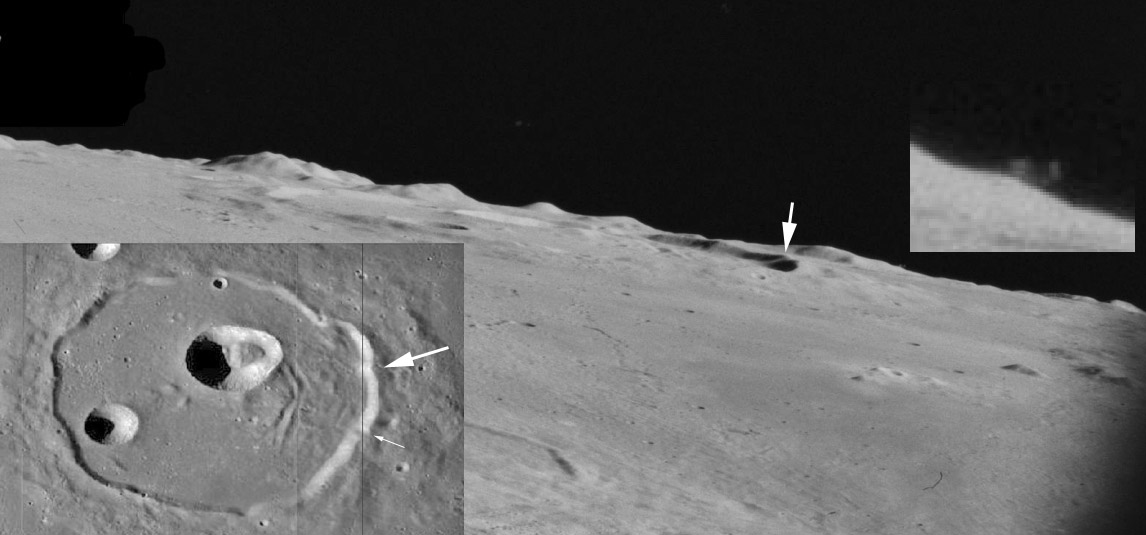October 1, 2021
Incomplete Quiz Answers
Originally published December 2, 2011

Apollo 15 image AS15-M-1543 from Apollo Image Archive (NASA, ASU & LPI)
Yesterday LPOD showed an unidentified image of an unidentified area of the Moon and asked what crater was shown and what anomaly was in the image. Immediately an LPOD reader identified the image, giving the actual frame number from Apollo 15! The crater obliquely seen is Cassini with its very shallow floor and two conspicuous craters. The insert at bottom left is an overhead view from the LRO Quick Map. It was suggested that the anomaly might be the faint point of light in the sky above Cassini, or that it is the bright line that passes through the shadow on the right wall of Cassini. These are good suggestions. The faint spot, when viewed at full resolution is an apparent defect in the film or photograph. The ridge on Cassini's rim (arrow on large image) is intriguing. By comparing with the overhead view I guess that the ridge is one corner of the bite out the rim (big arrow on inset image) or it could be where a small crater breaks Cassini's rim (small arrow). Either is a reasonable geologic explanation. The anomaly I referred to yesterday is the small smudge of brightness on the edge of a mountain beyond the right side of Cassini - the bottom right corner of the top insert points to it. Bill Hartmann pointed out this smudge to me and wondered what it might be. As seen in a 3 times enlargement of the Apollo image (insert at upper right) this smudge is made up of many pixels so it is not a single random defect. But in the days of film and photo prints complex defects such as this often occured. Alternative interpretations of dust or gas or something else actually on the Moon would be very exciting. I checked the images on either side of this one. The previous image was taken 27 seconds earlier and does not show any smudge at that location. By the time the following image was taken this mountain was no longer in the field of view. This is not an area of significant prior transient lunar phenomena activity nor where spacecraft have detected radon or argon escaping from the Moon. Both Bill and I think the most likely explanation is a photographic defect. Unfortunately there is no other obvious source of information that pertains to this. Perhaps if someone looked at the original film they might dust it off and see that the smudge had disappeared!
Chuck Wood
Related Links
Rükl plate 12
Yesterday's LPOD: Quiz
Tomorrow's LPOD: Visionary Dreamers
COMMENTS?
Register, Log in, and join in the comments.



